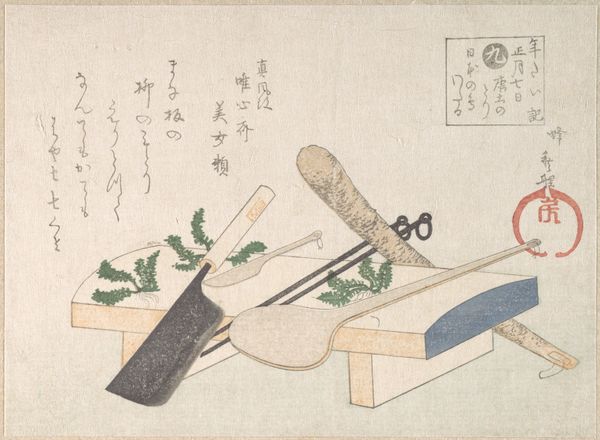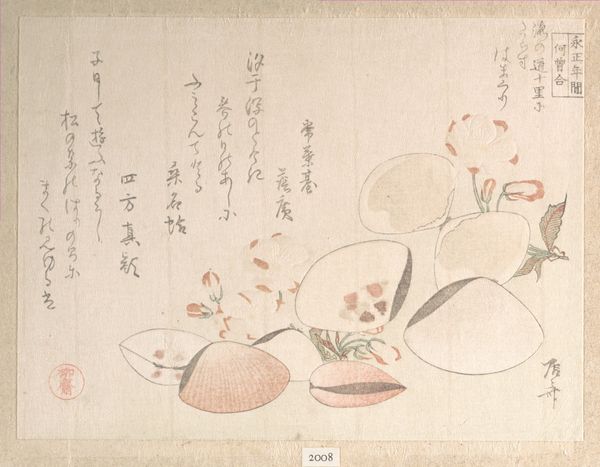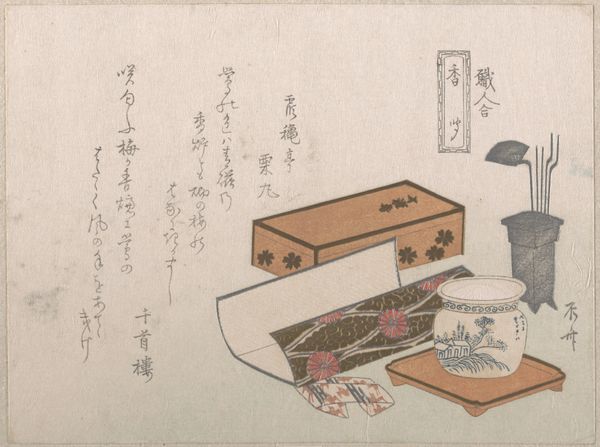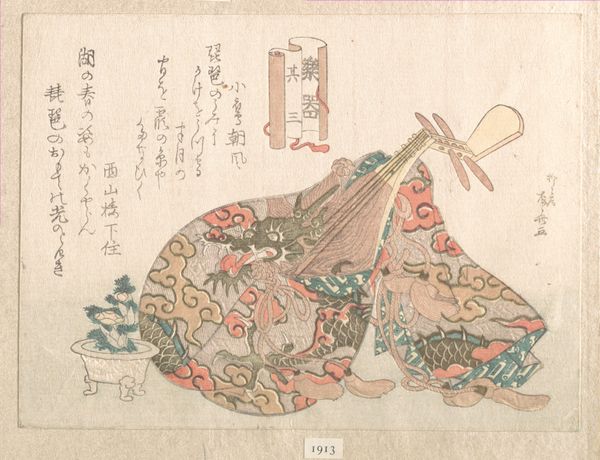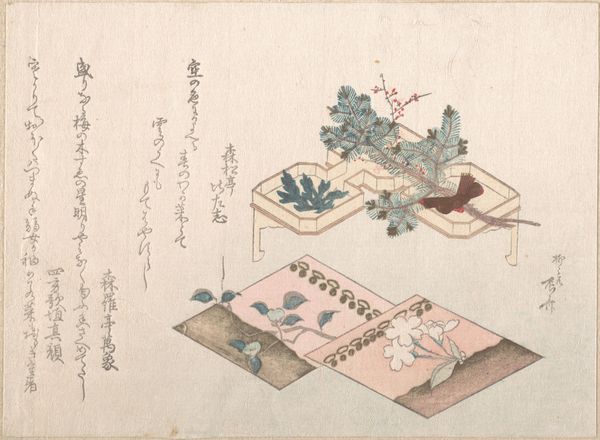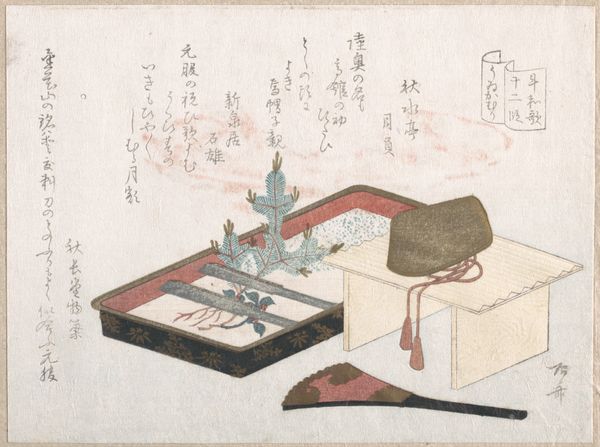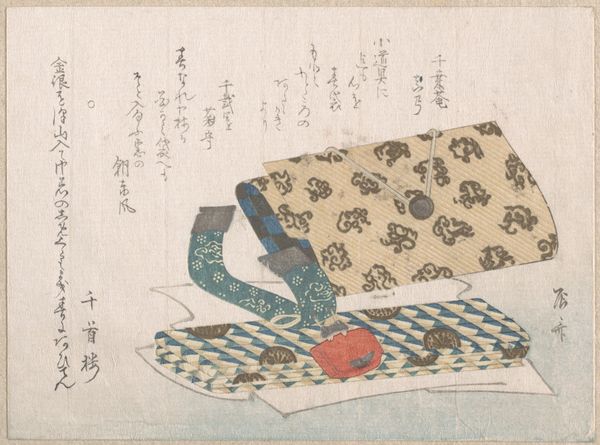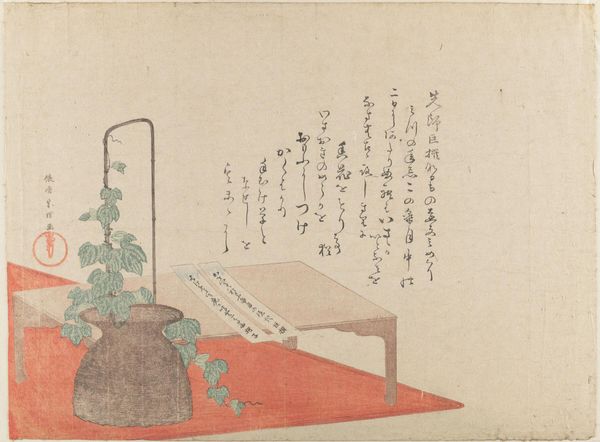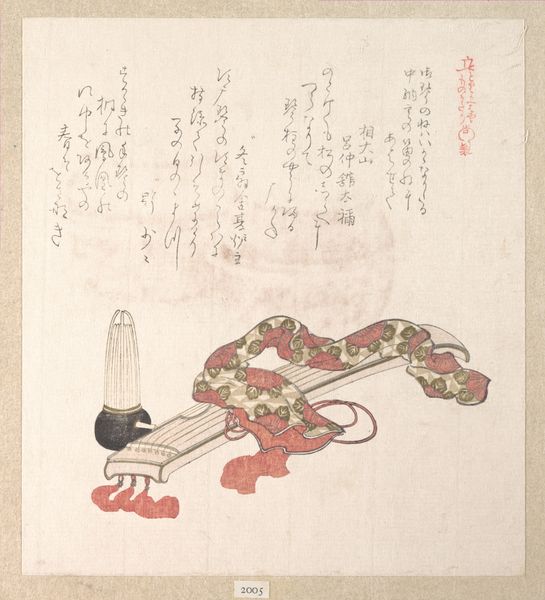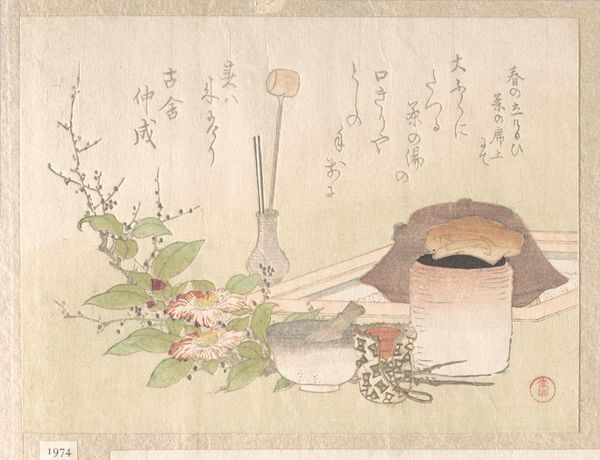
print, watercolor
#
water colours
# print
#
asian-art
#
ukiyo-e
#
watercolor
#
calligraphy
Dimensions: 5 13/16 x 7 7/16 in. (14.8 x 18.9 cm)
Copyright: Public Domain
Editor: Here we have Hachifusa Shūri's "Glass-Wares with Plum Blossoms," dating back to the 18th or 19th century. It’s a watercolor print. It feels… delicate, somehow, almost a still life sketch. What draws your attention to this particular piece? Curator: Immediately, I think about the materials themselves. It’s a print, but made using watercolors. So we have a fascinating tension between mass production and the hand of the artist. It’s Ukiyo-e, a style deeply enmeshed with a burgeoning merchant class and popular culture. Did Shūri intend to elevate everyday objects or perhaps comment on their increasing accessibility? Editor: So you’re thinking about the role of these glass objects within the culture at the time? Were they luxury items? Curator: Precisely. Were they imported? Locally produced? The means of acquiring the materials used to make both the objects *and* the print matters. This image, rendered using printmaking techniques, opens a fascinating discussion about production. Were these accessible items or carefully desired possessions, that the culture enjoyed? Editor: I didn't consider that. I was so focused on the image itself. Thinking about the class dynamics adds another layer to how one consumes art. Curator: It transforms the composition, doesn’t it? What initially reads as a simple arrangement now raises questions. Think about the labor involved in making the glasswares themselves, alongside the labor to create a printed artwork. That affects how we view even the plum blossoms depicted. It could hint to ideas about seasons and harvest or the wealth one has at the time. Editor: So, beyond just their aesthetic qualities, these plum blossoms are deeply tied to economic and social narratives? Curator: Exactly. By thinking about the materiality and context, we begin to see art as inseparable from broader systems of labor, production, and consumption. Editor: Wow. I'll never look at still lifes the same way again! This really changes everything I thought I knew. Curator: Excellent. Now we need to think about how this particular image plays a role within those dynamics.
Comments
No comments
Be the first to comment and join the conversation on the ultimate creative platform.
